Hematite stained Quartz seam seen in shale. Magnification 20x.
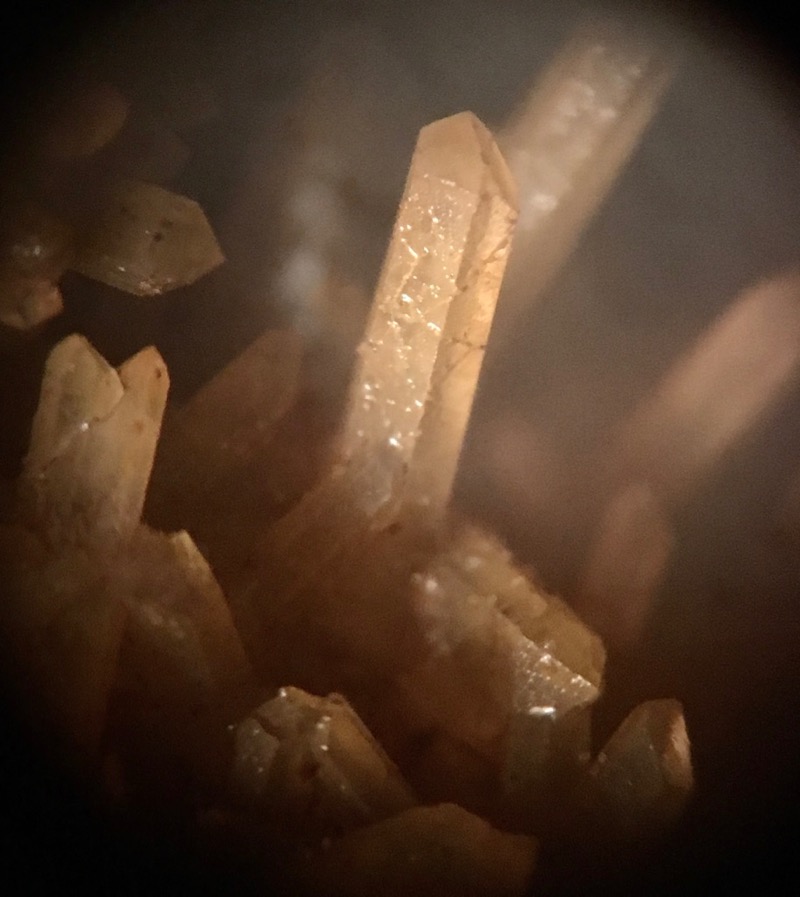
Scalenohedral Calcite. Magnification 20x.
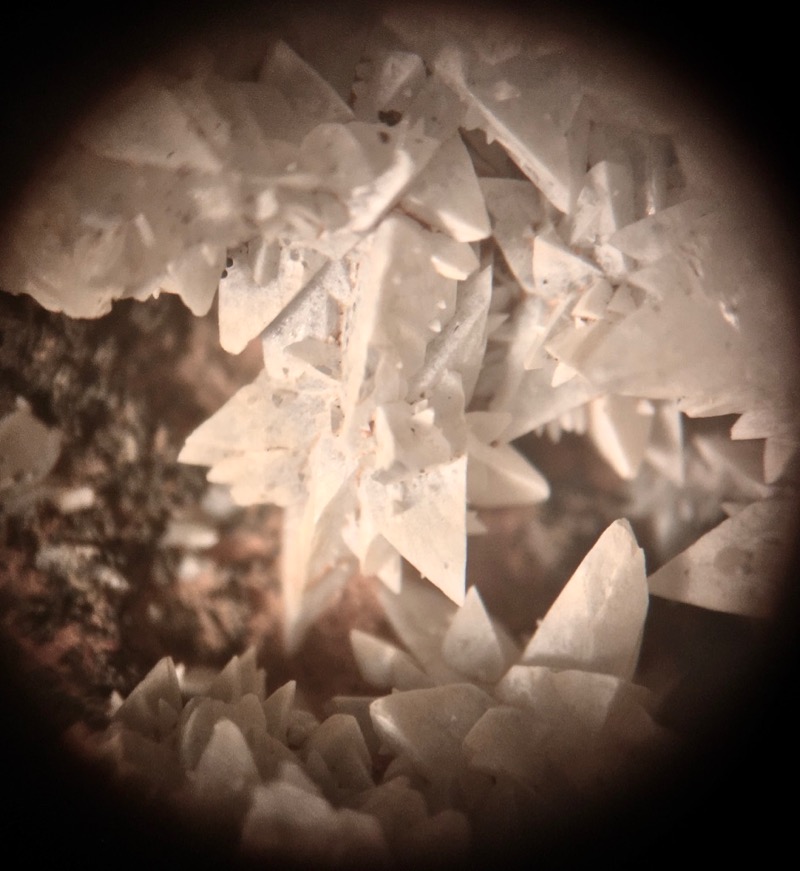
Hematite stained Quartz seam seen in shale. Magnification 20x.

Scalenohedral Calcite. Magnification 20x.

Psilomelane (manganese oxide) dendrites. Magnification 20x.
Weathered Selenite crystal. Magnification 20x.
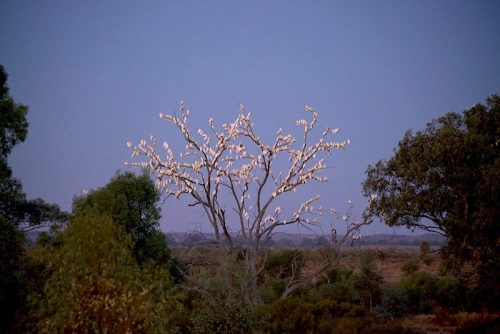
A pink Galah is sometimes seen amongst a flock of white Corellas, as Galahs are known to sometimes lay their eggs in Cockatoo and Corella nests. They seem to be regularly accepted as one of the flock but as they are a smaller bird, the Galah can be seen flying faster and will tend to circle the flock to keep pace.
Trictina atripalpis moth, as seen here on a rock along the Strzelecki Track is believed to augur oncoming rain. This male one was approximately 80mm long, and they can have a wingspan of up to 160mm. Females lack the distinct wing markings.
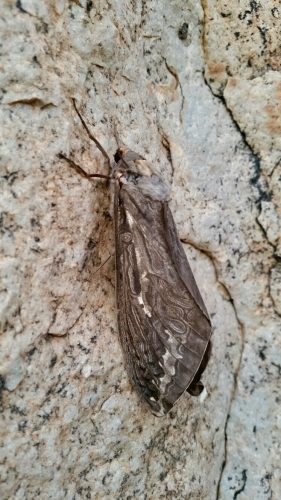
These mosses found a niche in a small hole in a rockface, 3 metres off the ground.

The quartzose silcrete of the Strzelecki Track formed in the Tertiary Era, as a duricrust formed through silica rich mineral deposition from groundwater at the low lying fringes of the Flinders Ranges. It appears to be cryptocrystalline in nature, made of a minute crystal structure also typical of chert and chalcedony.
Highly resistant to weathering, the silcrete formation reveals some very finely detailed fossil casts of vegetation. The fossils in this formation contain casts of plant detritus of varying species, one of which appears to be Casuarina.

This formation has intriguing layering of well preserved crushed quartz, silcrete and sand calcite balls as seen in this vertically upturned rock. Continue reading “Silcrete of the Strzelecki Track”

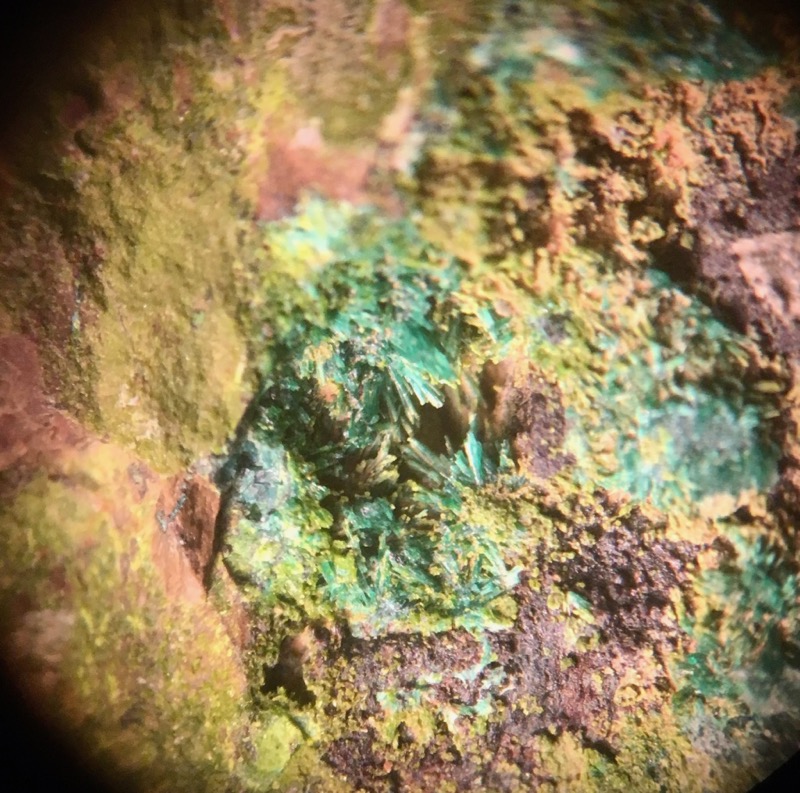
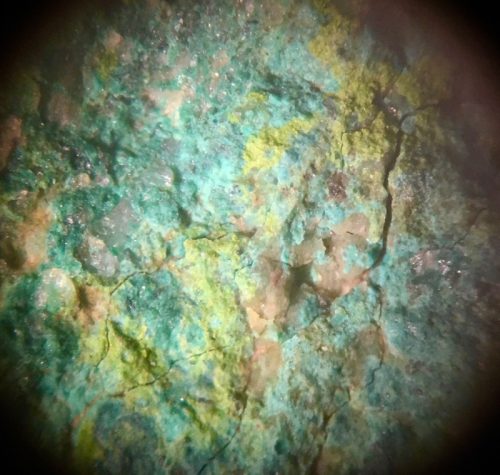
20x magnification
Chrysocolla included Calcite
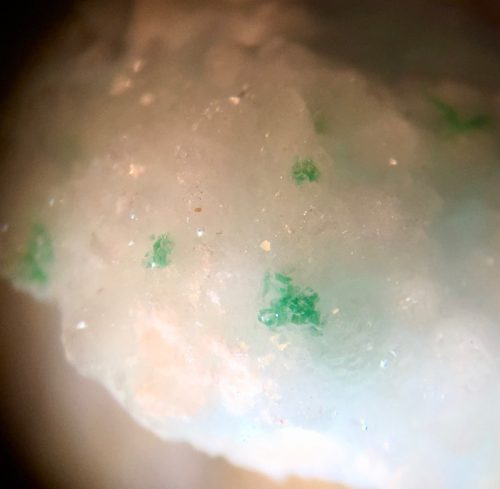
Chrysocolla covered with Calcite